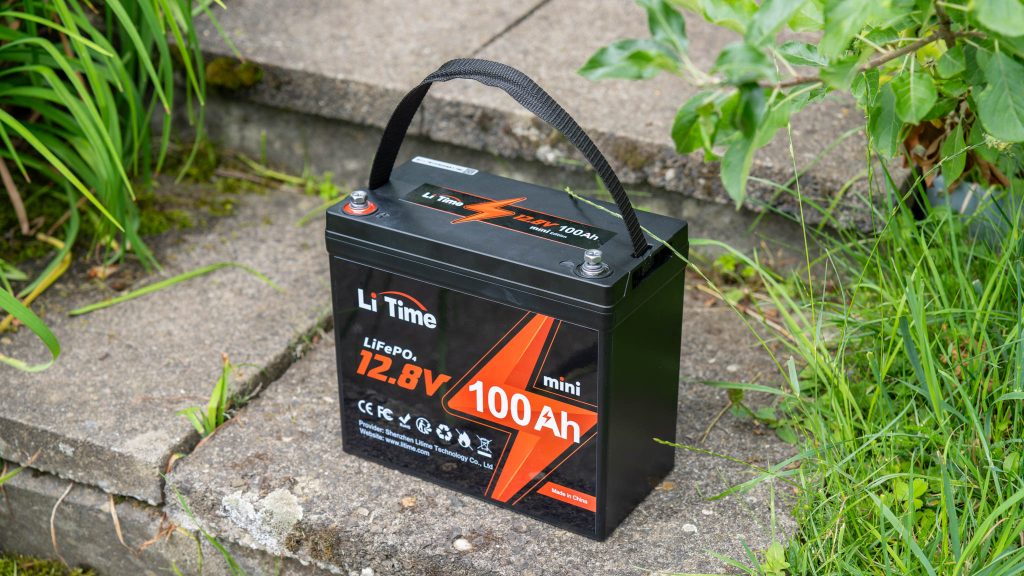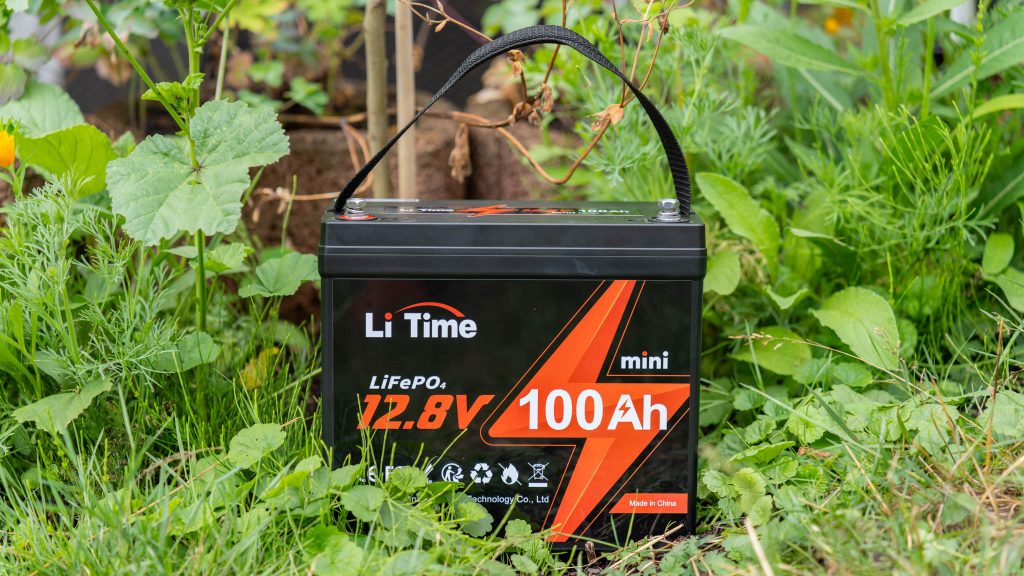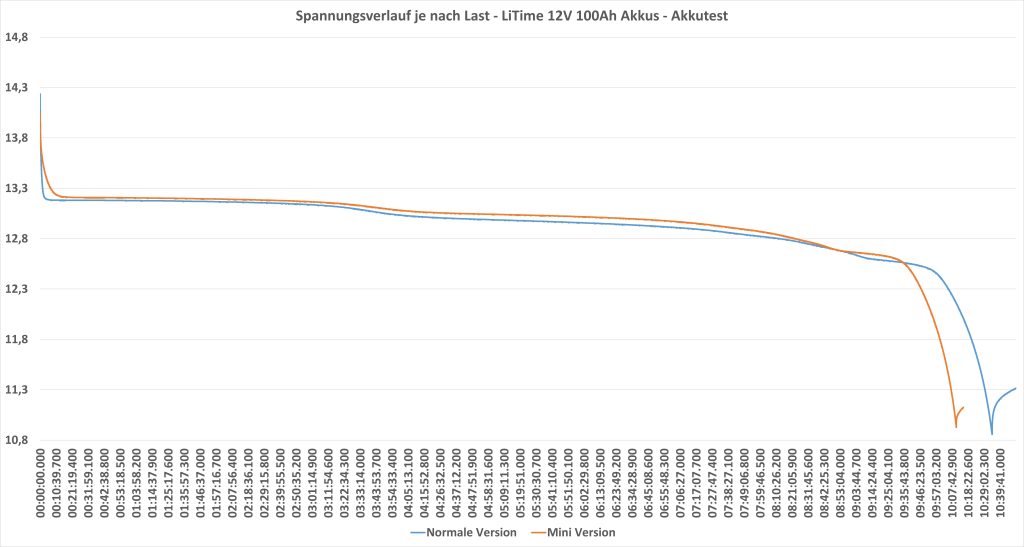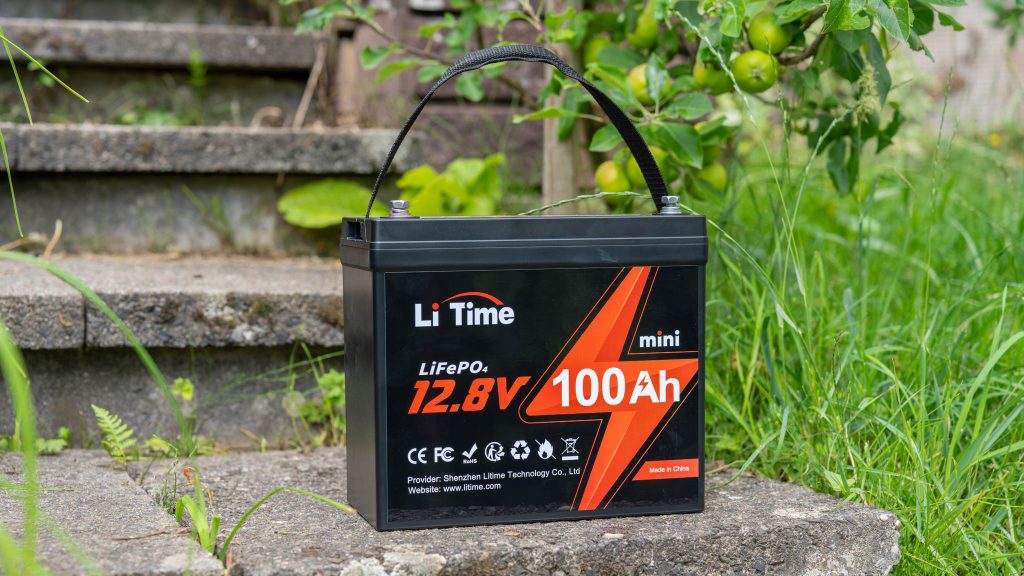The major suppliers of LiFePO4 batteries, LiTime, PowerQueen, and Redodo, all now offer a new battery.
This new battery is a “mini” version of the 100Ah battery. The manufacturers have simply reduced the size of the well-known 100Ah battery. The technical specifications remain the same, but the weight and size are significantly reduced.
Sounds exciting! But how does it perform in practice? Are these small mini LiFePO4 batteries really as good as their larger counterparts, just smaller?
Mini Batteries from LiTime, PowerQueen, and Redodo
LiTime, PowerQueen, Redodo, and other companies currently offer a 100Ah mini LiFePO4 battery.
In essence, it is likely that all these manufacturers use the same model with just a different logo.
Neither Redodo, PowerQueen, nor LiTime manufacture their batteries themselves; they also source them from large suppliers.
It can be assumed that the mini batteries from these manufacturers are all more or less the same. Is it possible that one manufacturer uses better cells than the others? It’s not entirely ruled out, but it is likely that we only have the usual variation within the series, and otherwise, the batteries are identical.
In this article, we will specifically look at the LiTime 12V 100Ah MINI LiFePO4 Lithium Battery, which represents the other models as well.
How much smaller?
The special feature of the mini batteries lies in their dimensions and weight. Let’s compare the mini version with the regular 100Ah version from LiTime.
- “Mini” – 260 x 133 x 227.5 mm
- “Normal” – 329 x 172 x 214 mm
So, the mini version has a volume of 7.86 liters, while the regular version has a volume of 12.1 liters, which is a significant difference!
We also see a similar difference in weight.
- Mini – 8.97 kg
- Normal – 11.5 kg
Therefore, the mini version of the LiFePO4 battery is over 20% lighter, which can be relevant in mobile applications.
Advantages and disadvantages of LiFePO4 batteries
Here are some general points about LiFePO4 batteries and what makes them good.
LiFePO4 batteries, also known as lithium iron phosphate batteries, offer several advantages over other battery technologies. LiFePO4 batteries are known for their high lifespan, safety, and environmental friendliness. Compared to lead-acid batteries, they have a higher energy density, although it is lower than that of lithium-ion batteries.
The major advantage of LiFePO4 batteries is their long lifespan. Compared to conventional lead-acid batteries or lithium-ion batteries, LiFePO4 batteries have significantly higher cycle durability.
In the case of mini LiFePO4 batteries, LiTime advertises an impressive 4000 cycles at 100% depth of discharge, which is substantial!
This is a higher specification than the “large” 100Ah batteries, which are usually rated with 3000 cycles or 4000 cycles at 80% depth of discharge.
Safety is another significant advantage of LiFePO4 batteries. Compared to lithium-ion batteries, LiFePO4 batteries are less prone to thermal instability and overheating. They have higher thermal stability and are less susceptible to so-called “thermal runaway” effects. LiFePO4 batteries cannot go into thermal runaway, partly due to their lower energy density compared to lithium-ion batteries.
Additionally, LiFePO4 batteries do not contain controversial materials like cobalt or other extremely toxic substances like lead.
One important disadvantage is the factor of “temperature.” LiFePO4 batteries should not be charged below 0 degrees Celsius, as it may lead to the formation of lithium deposits on the anode, causing internal short circuits and damaging the battery.
Unfortunately, the mini batteries do not have low-temperature shutdown. Therefore, you need to manually ensure not to charge the batteries below 0 degrees Celsius or use a charging controller that takes care of this.
100A max!
In principle, the 100Ah mini battery has a 100A battery management system (BMS). Accordingly, you can discharge or charge the battery with up to 100A.
However, LiTime recommends a maximum charging current of 20A for the best lifespan. This is slightly lower than the recommended 30-40A maximum charging current for large 100Ah batteries.
The actual capacity of the mini LiFePO4 battery
I test the capacity of batteries using an electronic load (DLB-600W), in this case, with a load of 10A and 20A.
- 10A – 101.95 A / 1310 Wh
- 20A – 101.16 A / 1280 Wh
The capacity of the battery is consistent! We reach 101-102 Ah, which is in line with the advertised 100Ah. However, the “large” 100Ah batteries from LiTime, Redodo, PowerQueen, etc., usually achieve 104-107 Ah.
Nevertheless, I cannot complain about a capacity of 101-102Ah; it is satisfactory.
Voltage profile
Finally, let’s take a brief look at the voltage profile of the mini version compared to the regular version.
As is typical for LiFePO4 batteries, the mini LiFePO4 battery also has a very flat voltage profile. However, the voltage is slightly higher than that of the regular version, but it remains stable for a longer period.
Conclusion
If size and weight are significant factors for your application, then the mini LiFePO4 batteries from LiTime, PowerQueen, and Redodo make perfect sense!
We have a significant reduction in size and weight while maintaining approximately the same performance.
In my test, the LiTime mini battery reached approximately 101-102Ah, which is in line with expectations. LiTime even advertises a higher durability than the large versions, with 4000 cycles at 100% depth of discharge, which is remarkable!
The only downside is the slightly lower recommended maximum charging speed of 20A.
Apart from that, if compact dimensions offer an advantage for you, there is little or nothing to argue against the mini versions of the 100Ah LiFePO4 batteries!
For more information on the mini battery, visit the manufacturer’s website at







